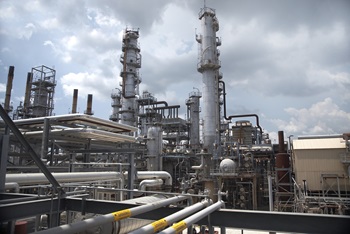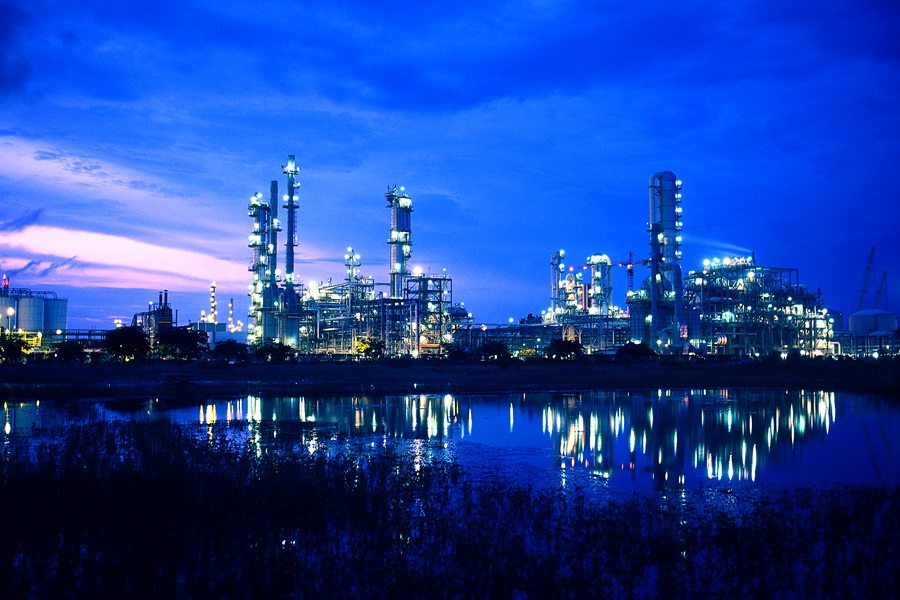Meeting IMO 2020 demands with better level instrumentation |
A massive shift in the marine transportation fuels market is moving closer as new IMO 2020 regulations are set to begin January 1, 2020. On that day, the marine sector is required to reduce sulfur emissions by over 80 percent.
With such a big change on the horizon, shipping companies and refineries have been preparing ever since the new regulations were announced.
The shipping companies are doing their part to meet the new regulations by installing scrubbers, converting fleets to run on liquefied petroleum gas (LPG), or operating by using low sulfur diesel fuel.
|
January 1, 2020When IMO 2020 goes into effect:
80%The total required reduction of sulfur:
3.5wt%Current maximum fuel oil sulfur limit:
0.5wt%New maximum fuel oil sulfur limit: |
Refineries are also getting ready. They’ve been expanding, building new, large scale residue processing units to refine “bunker” or heavy fuel oil used by the marine sector into low sulfur diesel that will meet IMO 2020 requirements.
Even with these expansion projects underway, refineries need to make the most of their existing residue processing units to simply come close to meeting the new demand. To do this, they’ll need reliable and accurate process measurement instrumentation that can withstand the challenging process of refining bottom of the barrel crude.
Getting the most out of delayed cokers and resid hydrocrackers
Delayed coking units and resid hydrocrackers take the heaviest crude oil feedstocks – like bunker fuel – and transform them into usable transportation fuels. Monitoring level in these processes accurately and safely can be difficult due to the hot, aggressive nature found inside these vessels.
Radiometric sensors get around this problem by making measurements external to the vessel, providing operators a better picture of their process and allowing them to safely increase throughput.
VEGA has been using radiometric technology since the 1950’s to measure level and density, and over the same time period, they’ve worked closely with refineries around the world to create complete measurement solutions for delayed coke drums and resid hydrocrackers.
Finding the optimum level in coke drums
Coke drum operators look to fill the coke drum with as much hydrocarbon as possible while maintaining safe practices. If filled too low, revenue is lost due to inefficiencies, and if filled too high, particulates or antifoam inside the vessel can reach the vapor overhead nozzle, causing blockages or damaging equipment downstream. Finding the sweet spot in the middle ground is impossible without a proper level measurement.
VEGA has helped countless refineries fill their coke drums higher and find that sweet spot to increase throughput using a combination of level and density measurement instrumentation – all working together – to give operators a full picture of what’s happening inside the delayed coking units.
A continuous level measurement using a FiberTrac 31 or SoliTrac 31 tells operators when to add antifoam agent. A density measurement provided by a MiniTrac 31 near the top of the vessel offers insight as to when the vessel is approaching its maximum level. And finally, a PoinTrac 31 point level sensor zeroes out the entire system after the drum has been emptied and cleaned, ensuring operators have an accurate and consistent measurement cycle after cycle.
Getting the most out of the hydrocracker
Resid hydrocracker operators maximize the use of high process temperatures, hydrogen, and catalyst to convert even the heaviest of hydrocarbon residue into high value transportation fuels. Unfortunately, the same conditions used to create those fuels damage any process measurement instrumentation. 
For continuous operation of the reside hydrocracker, operators need to know the location of the interface – where the heavy oil and catalyst meet – to prevent any catalyst from escaping with the finished product and contaminating downstream equipment.
VEGA uses multiple radiometric sources and MiniTrac 31 density detectors working together to provide an accurate density profile of the contents within the vessel, which gives operators a better picture of how efficiently the process is working. These sensors are mounted completely externally, so there’s no risk of measurement failure due to process conditions.
Conclusion
As the deadline for cleaner fuel quickly approaches, the pressure is on for refineries to provide more low sulfur diesel to the marine sector to keep goods moving across oceans and around the world. To safely meet the new, higher targets, refineries everywhere will need robust process measurement instrumentation that can help improve process efficiency and increase overall throughput for existing and new vessels.
Radiometric instrumentation can do all of this without ever interfering with the process since the sensors are mounted completely externally, making them immune to the extreme temperatures and pressures commonly found at refineries around the world.
Related products
Export this article
Download as PDFShare this article
Comments ({{comments.length}})
{{getCommentAuthor(comment, "Anonymous")}} {{comment.timestamp | date : "dd.MM.yyyy HH:mm" }}
{{comment.comment}}


